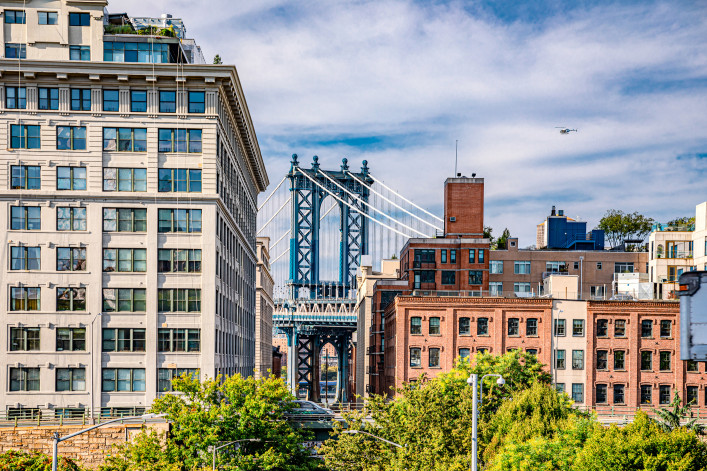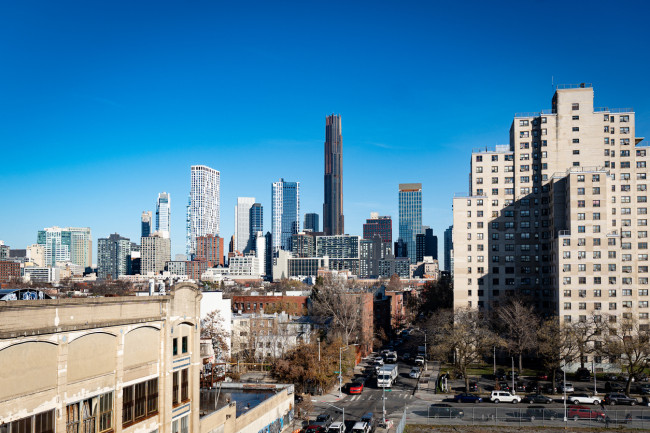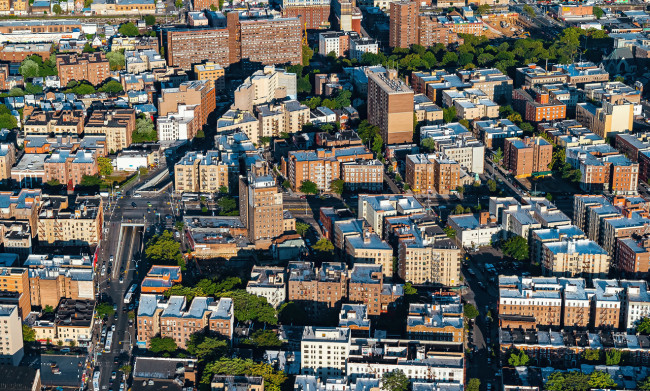What exactly is the 'AMI' that's used to determine affordable housing rents?
- The Department of Housing and Urban Development calculates area median income via survey and inflation data
- AMI for a single person in NYC is $108,700 in 2024; the amount rises if you live with more people

There are a handful of programs that give tax breaks to developers who reserve units for renters who earn a percentage of the area median income.
iStock
If you’ve ever entered New York City’s affordable housing lottery, you’ve probably read one key term over and over again: area median income. But what does that actually mean?
In short, area median income (or AMI) defines the median incomes for households of different sizes within a certain geography. The Department of Housing and Urban Development is the agency charged with calculating AMI, which determines a person’s eligibility for the city’s affordable housing lottery.
In New York City, AMI is based on income data for the five boroughs, plus Putnam, Rockland, and Westchester counties, which critics say artificially inflates AMI, and as a result, rent-stabilized rents. The AMI for a single person in NYC is $108,700 this year, and that amount increases if you live with more people.
[Editor's note: A previous version of the article ran in February 2017. We are presenting it again with updated information for October 2024.]
HUD calculated its 2024 median incomes with data from the U.S. Census Bureau's 2022 American Community Survey. The department also adjusts its AMI for inflation to try to keep it “as current as it can be,” said Matthew Murphy, executive director of New York University’s Furman Center, which researches housing policy.
A trade off
Using AMI as a baseline, NYC and New York State have a handful of programs that give tax breaks to developers who reserve units for lower-income renters. For example, the state’s low income tax credit program requires that at least 40 percent of a development’s units must be affordable to households who make up to 90 percent of AMI, in exchange for investors receiving a reduction in state income taxes.
Similarly, the city’s now-expired 421-a program provided city property tax breaks to developers in exchange for setting aside rent-stabilized units for renters who meet income thresholds.
This year the 421-a program was replaced by the new 485-x tax incentive program, which has a range of affordability options based on the size of the project. For example, large rental projects with 100 or more units receive a 35-year tax benefit and 25 percent of the units must be affordable at an average of 80 percent AMI.
These programs try to balance creating affordable units without being “so restrictive that we don't see any development,” Murphy said.
Unfair advantage?
But critics have pointed out that developers can often secure lucrative tax breaks in exchange for some still high-priced units. For example, 60 percent of the income-restricted apartments built under the city’s 421-a program between 2017 and 2020 were reserved for families making 130 percent of the area median income—well over $100,000, according to a report from NYC Comptroller Brad Lander.
Still, Murphy noted that even an expensive rent-stabilized apartment will likely remain more affordable in the long-term because rent increases at those units are capped, as opposed to market-rate apartments, where landlords can raise rents as much as they want. Ultimately, he said elected officials can choose to prioritize more affordable apartments.
“AMI serves as the boundaries of what you’re allowed to do,” Murphy said. “But from there, it’s up to policy makers to decide how much we are willing to invest to get to lower AMIs.”
—An earlier version of this article contained reporting and writing by Virginia K. Smith.































